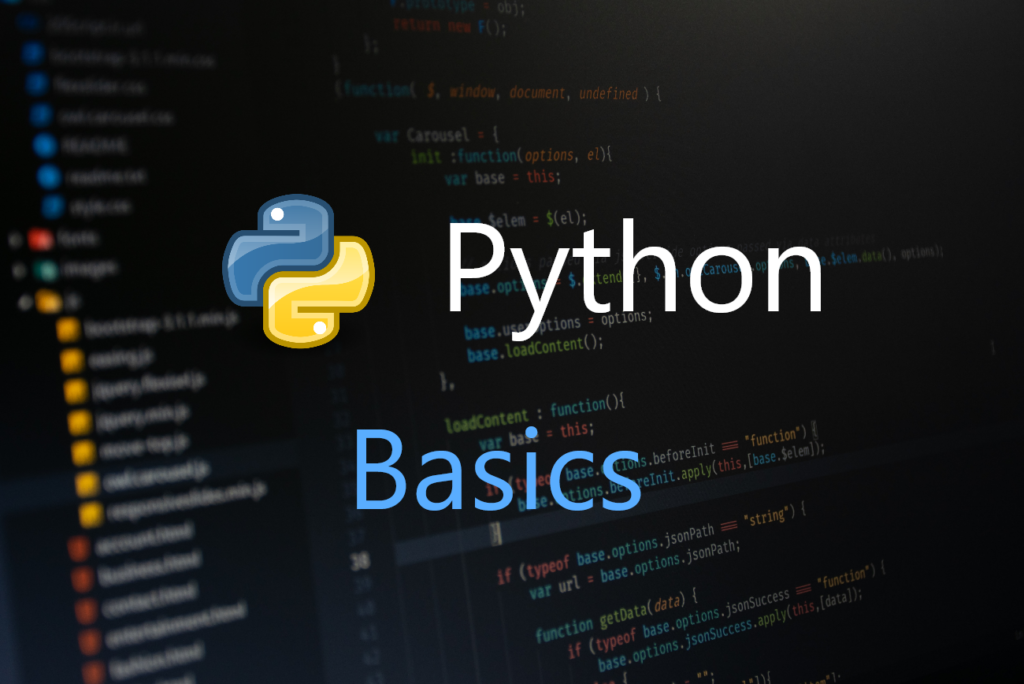Python Basics
- Introduction to PythonPython is a high-level, interpreted programming language known for its simplicity and readability. It was invented by Guido van Rossum and first released in 1991. Python supports multiple programming paradigms, including procedural, object-oriented, and functional programming. Its easy-to-learn syntax and large standard library make it popular for web development, data analysis, automation, and more.
- Python SyntaxPython uses indentation to define code blocks, eliminating the need for braces {} or keywords like end. The standard indentation is four spaces.
- Comments in PythonPython supports both single-line and multi-line comments. Single-line comments start with #. Multi-line comments are typically done using triple quotes (”’ … ”’ or “”” … “””).
- Data TypesPython has several built-in data types:
- Numeric types: int, float, complex
- Sequence types: str, list, tuple
- Mapping type: dict
- Set types: set, frozenset
- Boolean type: bool
- None type: NoneType
- VariablesVariables in Python are dynamically typed, meaning you don’t need to declare their type. Assignment is done using the = operator. Variable names should be descriptive and follow the snake_case convention.
- Control FlowPython uses if, elif, and else statements for decision-making. Loops include for and while. The break statement exits a loop, while continue skips the current iteration.
- FunctionsFunctions in Python are defined using the def keyword. They can take arguments and return values using the return statement. Functions promote code reusability and modularity.
- Modules and PackagesModules are Python files that can be imported into other Python files using the import keyword. A package is a collection of modules in a directory. Python’s standard library provides many useful modules, such as math, datetime, and os.
- File HandlingPython makes file handling easy with built-in functions like open(). Files can be opened in different modes, including r (read), w (write), a (append), and b (binary). Always ensure you close files using close() or by using a with statement to handle files automatically.
- Error HandlingPython uses try-except blocks to handle errors gracefully. The finally block can be used to execute code regardless of whether an error occurred.
- Object-Oriented Programming (OOP)OOP in Python is centered around classes and objects. A class is a blueprint for creating objects, which are instances of a class. Key OOP concepts include:
- Inheritance: One class can inherit attributes and methods from another.
- Encapsulation: Hiding the internal state of an object and requiring all interactions to be performed through methods.
- Polymorphism: Different classes can be treated as instances of the same class through inheritance.
- List ComprehensionsList comprehensions provide a concise way to create lists. They consist of brackets containing an expression followed by a for clause. They are used for transforming or filtering data in lists.
- Lambda FunctionsLambda functions are small, anonymous functions defined using the lambda keyword. They are typically used for short operations without defining a full function.
- Map, Filter, and Reduce
- Map applies a function to all items in a list.
- Filter extracts items from a list based on a condition.
- Reduce applies a rolling computation to sequential pairs of items, cumulatively reducing the list to a single value.
- Common Built-in FunctionsPython comes with many built-in functions, including len(), sum(), max(), min(), sorted(), type(), and range(). These functions perform common operations efficiently.
- DebuggingDebugging in Python can be done using print() statements or the pdb module for step-by-step debugging. Good debugging practices help in identifying and fixing bugs efficiently.
- Operators
- Arithmetic Operators: +, -, *, /, %, **, //
- Comparison Operators: ==, !=, >, <, >=, <=
- Logical Operators: and, or, not
- Membership Operators: in, not in
- Identity Operators: is, is not
- is checks if two variables point to the same object.
- is not checks if two variables point to different objects.


1 Comment
April 27, 2023
The design is simple and elegant. The customer support on this product is also amazing. I would highly recommend you to purchase templates from the Marketify team! Thank you for the wonderful project.